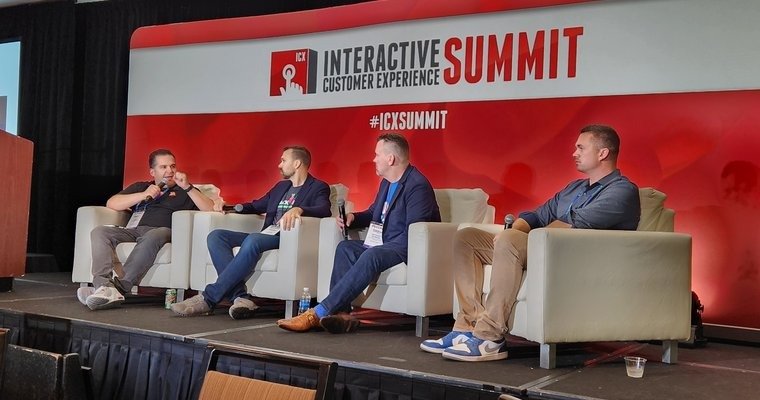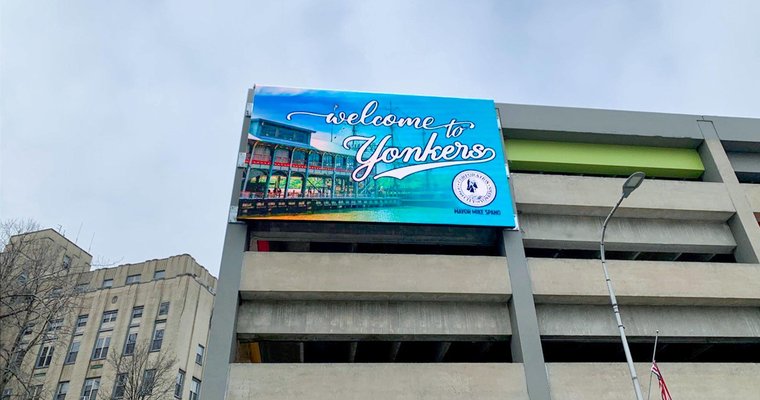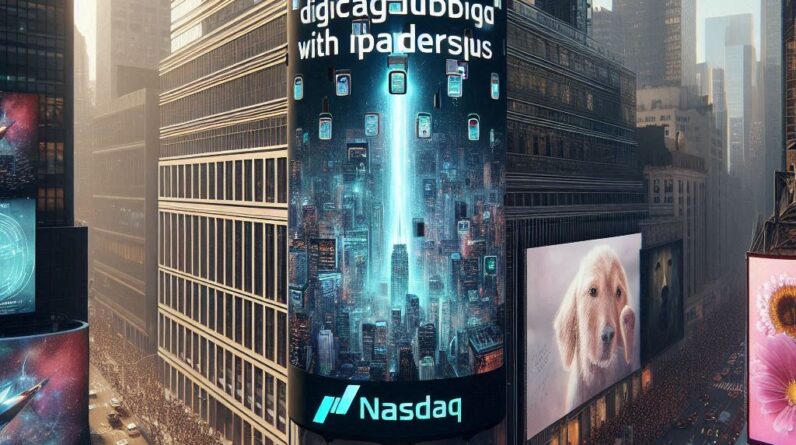
[ad_1]
With emerging technologies, including AI, changing the look and feel of the drive-thru experience, operators are future-proofing their operations
 Moderator Josh Halpern, CEO, Big Chicken; Mike Guinan, VP Operations , White Castle; Alex Ruhter, co-founder and CEO, JackBe; Darren Spicer, co-funder & CEO, Big Chicken. Image: Daniel Brown/Networld.
Moderator Josh Halpern, CEO, Big Chicken; Mike Guinan, VP Operations , White Castle; Alex Ruhter, co-founder and CEO, JackBe; Darren Spicer, co-funder & CEO, Big Chicken. Image: Daniel Brown/Networld.
Operators are facing challenges as customers demand the same level of experience from drive-thrus as they do from in-person visits to their favorite restaurants, coffeeshops and even grocery stores. Emerging technologies, however, are changing the look and feel of the drive-thru experience, and a few executives shared their drive-thru transformations during a panel at the annual Interactive Customer Service Association Summit, Sept. 11-13 in Charlotte, North Carolina.
Josh Halpern, CEO at Big Chicken, moderated “Fixing the drive thru conundrum” and panelists included Mike Guinan, VP of Operations Services at White Castle; Alex Ruhter, co-founder and CEO at JackBe; and Darren Spicer, co-founder and CEO at Clutch Coffee Bar.
Personalizing experiences with service mindset
Ruhter said that for the JackBe customer experience with drive-thru grocery pickup, it starts with the simple things. “When a customer pulls in…they need to be greeted prior to getting their groceries. When a customer is in a drive-thru, they actually expect to be served.”
Ensuring that staff are trained to be friendly and proactive so that customers don’t feel the need to get out of their car is essential.
“One of our main value systems is, we are here to serve. The entire purpose of our staff is, we are here to serve. When a customer pulls in, we take the posture of, ‘What can we do to take the burden off of you?’ And any small thing we can add along the way to help increase that interaction adds a ton of value.”
Examples include using customer data to see how many times a customer has visited and having associates make a note of it so that they can thank customers. This ties in nicely with the value of loyalty programs, as JackBe has rewards for various visit milestones. It all serves to make the customer feel valued and seen.
“We’re really just trying to create this hyper-personalized moment in time where the ordering process is impersonal — so the pickup process has to be hyper-personal,” Ruhter said, while noting that technology is essential to making the personal touches possible along with making the front end order process quick and easy for consumers. The quest for better technology has even led JackBe to file patents for a number of their system innovations, some of which are still in development.
The “magic list,” for example, allows shoppers to copy and paste their shopping list into a tool that searches for their desired items in the store stock. Another app update in-development is “shop by shelf,” which involves elements familiar to those following augmented reality and the metaverse. “We actually want you to view the shelf of a grocery store as if you were in it,” Ruhter said. “We’re building that right now.”
Still, it’s vital to remember that using tech innovation or personal touches in isolation simply isn’t enough to build the modern experiences consumers crave; you have to use both. “Our entire world is built on relationships, and we’ve got to maintain that in the drive thru,” Ruhter concluded.
Build a strong team and partner culture
What about food, which consumers more traditionally associate with the drive-thru experience? White Castle’s journey involves fusing respect for brand tradition and history with modern innovations, according to Mike Guinan, VP of Operations Services, White Castle.
“As a brand that’s 102 years old, and started a category, White Castle has had to learn to be self-sufficient,” Guinan said. This includes a philosophy that much of the in-store technology needs to be done in-house, including building and execution, with a constant focus not only on customer experience with that technology, but the employee experience as well.
Then, echoing Ruhter’s point, training is integral to the success of any innovation. “So, from the customer experience, our team members have to be able to explain it, execute it, and be proud of it,” Guinan explained.
Still, making every tech stack component in-house isn’t feasible for every operator, even one of White Castle’s size, especially certain emerging technologies like AI.
“When it’s not done in house, such as the AI piece — again, I go back to the partnership, and having a partner that truly shares your culture and passion,” Guinan said. “Our passion is our team members, because we have a belief that when you take care of your team members, your team will take care of the customers.”
This has a major impact on both employee and customer experience, along with areas of concern for restaurant operators like retention (which has a big impact on ROI). Guinan said the White Castle values have proven powerful in maintaining management-level staff. “Our average general manager that runs one Castle has 19 years with the company,” he said. “In our category, it’s three-to-five years.”
Lastly, you have to listen to your customers to know what is going well and what isn’t. Guinan said White Castle takes customer interaction seriously, with heavy use of online customer Q and A panels, which provide robust qualitative and quantitative data for decision-making and insights.
Options empower customers to choose their own experience
What about coffee? Similar to groceries and food, you have to embrace the paradox of technology and human, according to Darren Spicer, co-founder and CEO, Clutch Coffee Bar, whose novel approach includes ditching in-store orders for drive-thru windows and walk-up windows.
“It’s kind of a weird dichotomy for us because we were pushing technology on one front, but then on the other hand, we’re firmly entrenched in like that face to face interaction,” Spicer said. The tech priorities include taking orders out of the line, particularly to address surges when cars are eight to 10 deep in the drive-thru.
Choosing your vendors carefully and making sure you pick on that is able and willing to work with you in developing the software your team uses is vital to continuously improving your drive-thru, Spicer explained, noting that Clutch Coffee Bar recently switched to Toast for point-of-sale technology.
“We spend a lot of time with them [Toast]to calibrate,” Spicer said. “When our employees are taking that order, they need to be able to fly through things very quickly. And the longer they take to enter in an order, the slower that process becomes. So they’ve got to be able to have it organized in a way that makes a lot of sense, that flows very smoothly.
“And when that comes into the kitchen display screen over the espresso bar, that team has to be able to see that, keep it organized, and be able to know — is it going to the drive-thru window, or is it going to the walk-up window?” Clutch and Toast have collaborated on elements like color-coding the digital signage for baristas to be able easily to keep things organized.
Lastly, offering customers options to customize their experience is essential. For example, if a customer pulls in during a surge and feels dismayed at the prospect of waiting, Clutch has worked to update their app so that those customers can simply order their drink from the walk-up window in the app.
“So, empowering people who want a different experience, who say, ‘Hey, I want a great product, and I want a great brief experience — but I just don’t have time to wait.’ Great! How can we unlock that for them — allow them to mobile order and come to that walk-up window.”
A balanced approach
Technology is developing faster than ever, but panelists agreed that success in drive-thrus means striking a careful balance between innovation and timeless principles of the human touch.
This means making customers feel valued while using cutting-edge technology to provide a better-than-ever experience. Always remember that tech and people skills don’t contradict each other — they complement each other.
The Interactive Customer Experience Summit is hosted annually by the ICX Association to help business owners and operators learn how to leverage emerging technology to streamline customer experience.
Daniel Brown is the editor of Digital Signage Today, a contributing editor for Automation & Self-Service, and an accomplished writer and multimedia content producer with extensive experience covering technology and business. His work has appeared in a range of business and technology publications, including interviews with eminent business leaders, inventors and technologists. He has written extensively on AI and the integration of technology and business strategy with empathy and the human touch. Brown is the author of two novels and a podcaster. His previous experience includes IT work at an Ivy League research institution, education and business consulting, and retail sales and management.
[ad_2]
Source link






